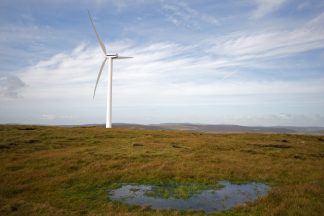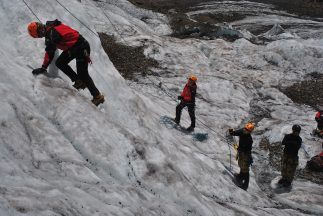Scotland is on track for a summer drought as experts raise concerns over water scarcity after months of below-average rainfall, data suggests.
The Scottish Environment Protection Agency (SEPA) has urged businesses to “take action now” in managing their water use and ensure their operations have climate resilience built in.
The latest Water Situation Update for March 2025 shows that the last month brought below-average rainfall across most of Scotland.
Some areas in the south saw less than a third of what they would usually expect, showing a continuing trend highlighted in SEPA’s Winter Water Report 2025.
Parts of Angus and Fife have seen ten straight months of below-average rainfall, receiving less than half of what’s normal for March.
Shetland was the only place that recorded above-average rainfall.
The environment watchdog said groundwater levels at its monitoring point have dipped lower than levels recorded in early April 2022, just months before a summer drought led to water restrictions.
The only area of the country with groundwater levels above normal for the time of year is Moray, reflecting the higher-than-average rainfall in the area over the winter period.
SEPA said the impact due to the lack of rainfall is already showing with river flows running “low to extremely low” for this time of year.
Despite Scotland’s reputation as a wet country, climate trends are shifting with extended dry periods becoming more common and increasing the risk of water scarcity.
SEPA did note that 2024 was the first year in some time that Scotland did not experience any significant water scarcity, thanks to more favourable rainfall patterns.
The agency said the return of warnings so early in 2025 highlights the increasing unpredictability of Scotland’s climate and the need for long-term adaptation.
Kenny Boag, SEPA’s national head of environmental performance, said water scarcity is becoming a “growing challenge” in Scotland.
“The data from March shows there is an increased risk that water scarcity could occur early in the season this year,” he said.
He added that SEPA will continue to monitor the situation closely and will begin weekly water scarcity reporting in May unless the situation deteriorates sooner.
“We’ll continue to work closely with Scottish Government, businesses and key stakeholders – including the agricultural sector, industry and Scottish Water – over the coming months to monitor water levels, manage resources sustainably, support adaptation measures and ensure the correct balance is struck between protecting the environment and providing resources for human and economic activity,” Mr Boag added.
A Scottish Government spokesperson said: “This warning from SEPA highlights the ongoing impact of climate change on our water resources.
“The Scottish Government will continue to work with SEPA, Scottish Water and key stakeholders to monitor and manage water availability to ensure supply is supported in an effective and sustainable way.”
Follow STV News on WhatsApp
Scan the QR code on your mobile device for all the latest news from around the country


 iStock
iStock

























